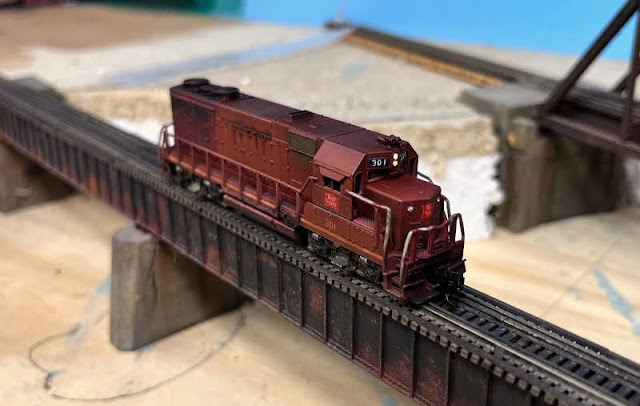Years ago, back in the late 80's I bet, I ran across some little tiny jewels at the local hobby shop.
They were brought to my attention as a friend used them for marker lights on his HO locos for marker lights. Intrigued, I took a closer look at them and saw that they had them as small as 1mm.
They also came in three colors: Red, Green and Clear. So I picked up a pack of the clear 1mm's to play around with.
They looked to be just about the right size, maybe a tad too big. Feeling gutsy I took a sharp #17 exacto blade and shaved off the molded part of the marker light (the part that was supposed to the lens) and left the base. Then I took a #56 carbide drill bit and slowly started to drill in the middle of the remaining base, just enough to where the little jewel would sit into the hole. The trick was to not drill clear through, so I twisted the bit a few times and checked the fit.
Since the drill bit had a slight angle on the tip, like most do, it left a nice little divot just big enough that the 1mm jewel dropped right in. Then using a toothpick I applied a tiny drop of CA glue and carefully laid the jewel in place. Viola! A nice looking marker light. It wasn't lit, but it reflected the ambient light just enough to sparkle and look like the light was on.
I've been doing this for years but recently I noticed I was getting low on them and knowing they'd been out of stock/production forever. I was beginning to think that I wouldn't ever find any again.
But while snooping on the nifty little tool we have at our disposal these days: the Internet, I started in one night looking for "1mm Jewels". Not much luck, so I kept refining my searches. Finally I found some that looked similar but were too big. These were Rhinestones.
So I refined my search and bingo! I found some on Amazon but they were still a little too big. I finally found some 1mm's on a site from the UK called mybeadsfindings.
I wound up buying two 5 packs of them, each 5 pack had roughly 1440 stones, so I wound up with almost 3000 marker lights for about $15 with shipping from the UK. I don't think I'll ever have to worry about running out again? Unless I misplace them...
I apologize for the fuzzy images, my new phone doesn't do close-ups as well as my older iPhone 11.
I drill out the molded in marker lenses.
Then apply a small dab of CA glue to the finished model.
They might be a tad too large but they sure look good when the light hits them just right.

















